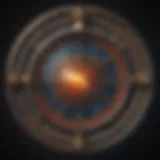Understanding Free Future Tarot Card Reading
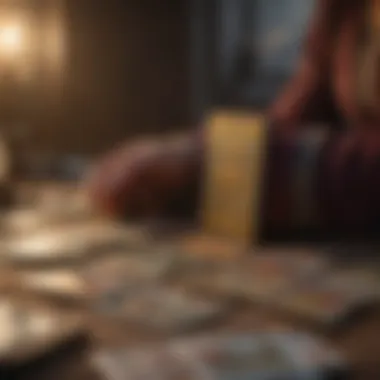

Intro
Delving into the realm of free future tarot card reading reveals a blend of ancient tradition and personal discovery. This practice is not just about divining what’s ahead; it offers a glimpse into the self and one’s relationship with the universe. From its storied past, where cards served as more than just a parlor game to the countless methodologies embraced today, the transformerative power of tarot remains profound. It speaks to a unique symbiotic relationship between the reader and the seeker.
In this article, we will walk through various aspects of tarot reading, exploring its history, key methodologies, and what these arcane symbols truly mean. By peeling back the layers, we aim to enhance understanding and provide practical knowledge that’s accessible to both the novice and seasoned tarot enthusiasts. No monetary barriers shall stand in the way of enlightenment. Let's step into the cards and see what they have to reveal.
Understanding Tarot Card Reading
Tarot card reading presents a fascinating intersection of history, art, and spirituality. The importance of understanding this practice cannot be overstated, especially for those looking to delve into the realm of divination. What sets tarot apart is not simply its cards but the layers of meaning, intention, and interpretation that accompany each reading. Clear comprehension allows both novice and experienced users to navigate this intricate landscape, unlocking personal insights that can guide important life decisions.
Origins and History of Tarot
The historical roots of tarot are intriguing, steeped in speculation and varying interpretations. Originally, tarot cards emerged in the 15th century as playing cards in Europe, with no spiritual significance attached to them. As they morphed into tools for divination in the 18th century, a tapestry of symbols and meanings began to weave around the cards. The connection between tarot and mysticism expanded during the 19th century, when figures like the French occultist Éliphas Lévi contributed to the understanding of tarot’s esoteric meanings.
One of the most notable historical aspects relates to how tarot was utilized for both entertainment and as a contemplative tool. The shift from mere playing cards to an avenue for divination illustrates the evolving human desire to connect with the unseen. This journey through time highlights the adaptable nature of tarot, catering to personal growth and understanding in diverse cultural contexts.
Structure of a Tarot Deck
The structure of a tarot deck is essential to grasping its functionality. A standard tarot deck comprises 78 cards, divided into two primary categories: Major Arcana and Minor Arcana.
Major and Minor Arcana
The Major Arcana consists of 22 key cards, which signify significant life events or spiritual lessons. Each card within this category carries profound symbolism and archetypal energy. The Fool, for instance, symbolizes new beginnings and innocence, while the Death card signifies transformation and change. These cards act as powerful thematic guides in readings, representing peak experiences of the human journey.
In contrast, the Minor Arcana is composed of 56 cards divided into four suits: Wands, Cups, Swords, and Pentacles. Each suit describes daily experiences, opportunities, and challenges that influence the querent's life. This division enables tarot readers to quickly identify the context of a reading, grounding more abstract insights into practical situations.
Four Suits Explained
The four suits of the Minor Arcana are distinctive not just in their themes but also in the unique aspects they cover:
- Wands: Represent action and motivation, reflecting energy and creativity.
- Cups: Focus on emotions and relationships, exploring one's inner world.
- Swords: Relate to intellect and conflict, providing clarity on truths and challenges.
- Pentacles: Deal with material aspects and security, offering insights into prosperity and stability.
By understanding how these suits interact, readers can reveal intricate narratives within any tarot spread. Each suit, therefore, adds a layer of depth to the readings, making them more relatable to personal situations.
Tarot Cards Order and Meaning
The order of the tarot cards plays an important role in how they are interpreted in spreads. Major Arcana cards, for example, often suggest significant moments in one’s life, while Minor Arcana cards relate to day-to-day occurrences.
Appreciating the sequence helps elucidate a reading's narrative. The initial card drawn sets the tone, while subsequent cards can build upon the theme established. This sequential understanding enhances the context of each card's individual meaning, providing a comprehensive framework for readings.
The arrangement and meaning of the cards serve to mirror life’s complexities, offering clarity amidst chaos.
Importance of Intention in Tarot Reading
In tarot reading, intention acts as a guiding force that shapes the outcome of a session. Prior to engaging in a reading, practitioners often emphasize the need to center their thoughts and focus their energy. This cultivation of intention paves the way for deeper insights, allowing the reader to connect with the cards on a more intuitive level.
Without clear intention, readings can become muddied or stray off course, failing to provide meaningful guidance. Therefore, it becomes crucial to articulate specific questions or themes for the session. For instance, if a reader approaches a deck with unresolved issues about relationships, those considerations will influence the interpretation process, helping to hone in on related card meanings.
Ultimately, the conscious alignment of intention elevates tarot from a mere pastime to a profound tool for self-discovery.
The Concept of 'Free' in Tarot Readings
Exploring the notion of 'free' in tarot readings sheds light on the evolving landscape of spiritual guidance. For many, the financial barrier to accessing tarot readings can feel considerable. However, the advent of the internet has changed the game, opening up a world where individuals can seek insight without the looming worry of how much they’ll have to pay for a reading.
Understanding this accessibility is crucial, as it allows more people to learn about themselves and connect with their intuition. When we talk about free tarot readings, it is not just about monetary aspects; rather, it intertwines with inclusivity. People from varying socioeconomic backgrounds can engage with tarot, democratizing wisdom that once felt elitist.
Accessibility and Inclusivity
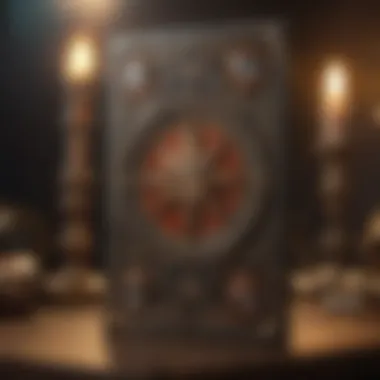

Accessibility in tarot readings means making this ancient practice available to everyone, regardless of their financial situation. It removes barriers that often discourage seekers. Free resources, whether online platforms or community events, allow individuals to explore tarot without commitment to costly sessions. This is particularly vital for those who might feel intimidated or overwhelmed by expensive services.
Consider community groups on Reddit or Facebook, where enthusiasts share their knowledge and conduct readings for free. These spaces cultivate a sense of belonging and encourage collaboration, fostering a supportive environment for novices and seasoned practitioners to grow together. Notably, the availability of free tarot readings promotes inclusivity.
- Individuals from different backgrounds can experiment without the fear of judgment.
- It encourages people who might not have access to traditional avenues of spiritual guidance to learn this art and develop their own interpretation.
This new landscape can be empowering. Having the chance to explore tarot in a supportive group can boost confidence and nurture understanding.
Quality Versus Cost of Readings
The juxtaposition of quality and cost in tarot readings raises an interesting dialogue. People often assume that higher fees correlate with better insights. In reality, the essence of a good reading lies not in the monetary value but in the connection and the intuition of the reader.
When opting for free tarot readings, it’s essential to reflect on the qualifications of the readers involved. Not every free reading comes from an inexperienced practitioner—many skilled tarotists do volunteer their time or offer free sessions as a means to hone their craft or give back to the community.
Here's a breakdown of what to consider:
- Experience: Some seasoned readers provide free online sessions, offering a taste of their style and insight.
- Trustworthiness: It’s crucial to gauge the reliability of a platform or individual conducting free readings.
- Feedback: Look for reviews and testimonials from others who have participated in free readings to assess their quality.
The evolution of tarot readings in this digital age allows for a blend of opportunity and quality. Balancing cost against what an individual can gain is vital. Understanding the hidden gems among the free offerings can lead to profound insights and experiences, challenging the notion that you always have to pay for something meaningful.
In essence, free tarot readings symbolize a shift in accessibility, allowing for diverse voices and perspectives within the tarot community.
Engaging with tarot in this manner not only enhances personal insight but also enriches the collective experience within an ever-expanding realm of spiritual exploration.
Different Types of Tarot Spreads
Tarot spreads play a crucial role in how messages from the cards are interpreted. Each unique spread serves a distinct purpose, guiding the reader in focusing on specific areas of inquiry or insight. Whether you’re seeking to understand your past, address current challenges, or plan for future outcomes, the choice of spread can significantly shape the interaction between the reader and the cards. Here, we will elaborate on some popular spreads that even beginners can utilize to enhance their tarot card reading experience.
Single Card Draw
The Single Card Draw is perhaps the simplest yet most potent form of tarot reading. When a reader pulls just one card, it distills the inquiry down to its essence, providing clarity and immediate insight. This method is often used for quick guidance or to kickstart the day.
A key characteristic of the Single Card Draw is its ability to offer a snapshot, an instantaneous reflection of the current energies surrounding the querent. The elegance of this approach lies in its straightforwardness. You don’t have to memorize complex layouts or interpretations; simply focus on the card drawn.
However, one potential downside is that the depth of insight may be limited compared to multi-card spreads. Still, it is invaluable for those new to tarot or anyone seeking a quick answer without delving too deep into their psyche.
Three Card Spread
The Three Card Spread is a notable expansion beyond the Single Card Draw. It allows for a broader perspective and offers more layers of meaning. This setup is particularly versatile and can be applied to various inquiries. Two common interpretations of the Three Card Spread include:
Past, Present, Future
The Past, Present, Future layout provides a timeline through which one can analyze their situation. In this spread, the first card typically represents influences from the past that may still be affecting the querent’s current condition. The second card sheds light on the present, indicating the current issues or situations where one might find themselves. Finally, the third card offers a glimpse into potential future outcomes based on the current trajectory of their choices.
This spread is popular due to its clear narrative structure; it compels one to reflect on their journey while drawing connections between their past actions and present state. However, it can also bring some discomfort if one is not ready to confront potentially painful past experiences, which can be a significant consideration when approaching this spread.
Mind, Body, Spirit
Another insightful variation within the Three Card Spread is the Mind, Body, Spirit layout, which dives into the holistic aspects of an individual's being. Here, each card relates to a different facet: the first card signifies mental clarity or challenges, the second reveals physical health and well-being, and the third explores emotional or spiritual development.
This method is unique as it encompasses a well-rounded view of the querent's current state of being. It’s a beneficial choice as it encourages holistic introspection, helping individuals address imbalances and integrate different aspects of their lives. The downside might be its complexity, as individuals may feel overwhelmed if they uncover disjointed messages across the cards.
Celtic Cross Spread
The Celtic Cross Spread is perhaps the most recognizable of all tarot spreads. This ten-card layout is detailed, offering a comprehensive map of the querent's circumstances. It provides insights into the question at hand while considering various factors influencing the situation. Each position within the spread has a designated meaning, such as immediate challenges, external influences, hopes and fears, and potential outcomes.
The richness of insights gained from a Celtic Cross is immense. Its depth can aid more seasoned readers in crafting intricate narratives and interpretations. However, for someone just starting, it may appear daunting due to its complexity and the number of cards involved. Learning the specific placement and meaning of each card can take time and practice. Yet, for those willing to invest, the Celtic Cross offers unparalleled clarity and understanding of intricate life situations.
Interpreting Tarot Cards
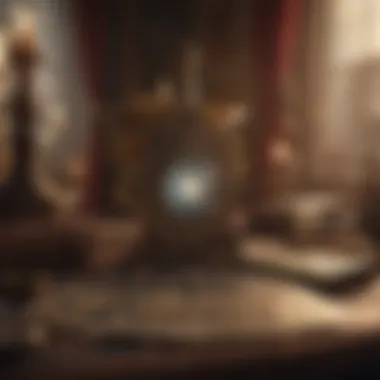

Interpreting tarot cards is where the rubber meets the road in divination. It's not just about flipping cards; it's about delving deep into the layers of meaning they represent. Each card tells a story, and understanding that narrative is key for anyone looking to gain insight into their lives or the lives of others. This understanding can effectively bridge the gap between randomness and purpose in the mystical practice of tarot, making it an invaluable tool for discerning truth.
Card Meanings and Symbolism
Every card in the tarot deck comes with its own set of meanings and symbols, rooted in rich historical and cultural layers. For instance, the High Priestess embodies intuition, mystery, and hidden knowledge. The imagery present on the card, such as the scroll and the moon, further encapsulates these themes. It's not just important to memorize the meanings; understanding the symbolism helps to knit together a fuller story when reading.
Even subtle differences in design can shift interpretations dramatically. For example:
- The Fool, often associated with new beginnings and spontaneity, contrasts starkly against the Death card, symbolizing transformation and closure.
- The emotional context plays a crucial role. When interpreting a card during a reading, ask yourself: what is the emotion behind this card? For instance, if the Ten of Swords appears, the stark imagery may suggest pain, but it can also open the dialogue about rebirth.
When reading, one must take into account both traditional meanings and personal interpretations as they relate to the situation at hand. This duality allows for greater depth in readings, creating more tailored insights.
Reversed Cards
Now, let’s talk about reversed cards, a subject that can conjure a fair bit of debate among tarot readers. A card in reverse can flip its meaning on its head, sometimes unveiling hidden aspects that typically remain obscured. For example, the Lovers card, when reversed, may symbolize disharmony or difficult choices, shedding light on conflicts that were otherwise unnoticed.
Assessing reversed cards requires sensitivity. It’s tempting to see reversals solely as negative signs, but they often serve as a wake-up call. Here are a few considerations:
- Reflect and Analyze: It prompts you to reflect on what needs to change. If the Magician reversed appears, it could indicate manipulation or poor communication. A good question then would be: how are you blocking your own potential?
- Duality of Interpretations: Not all reversed cards are inherently bad. For example, the Wheel of Fortune reversed could point to a pause or a break in cyclic patterns; it offers a window to influence your fate positively.
Embracing the complexity of reversed cards opens paths to more nuanced interpretations. It’s not merely seeing a card upside down but stepping into the myriad meanings it might hold in that specific moment.
Combining Cards in a Spread
Combining cards in a spread is akin to weaving a tapestry; every card adds its thread to create a larger narrative. Understanding how different cards interact can unveil layers of meaning not evident when viewing them in isolation.
Take the Two of Cups alongside The Tower. The combination suggests a sudden upheaval in a relationship, urging an examination of how certain dynamics play out. Here are key elements to consider:
- Context Matters: The context in which cards are read is crucial. If you draw Strength alongside The Hanged Man, it might suggest a need for patience in harnessing inner courage.
- Reinforcement or Contrast: Some combinations reinforce each other's messages, while others might provide a balance or contrast, shedding light on conflict. For example, The Emperor and The Empress together can show a harmonious balance of order and creativity.
Understanding the interplay between cards elevates readings from simplistic card interpretations to rich narratives full of personal insight. It’s a skill honed over time, lending a storyteller’s touch to the act of reading.
As you navigate through the maze of meanings, let intuition be your compass.
Developing Intuition and Personal Connection
In the world of tarot, developing intuition is akin to nurturing a garden; it requires attention, care, and patience. Intuition isn't just a buzzword; it's a vital element in reading tarot cards. It acts as a bridge between the reader and the card’s vibrational energies. When practitioners engage deeply with their intuition, they enhance not just their readings but also their personal connection to the tarot.
The significance of intuition in tarot reading can be underscored through the principle that tarot reflects one's inner landscape. Rather than strictly adhering to standardized meanings of cards, a reader’s intuitive insights can provide a more tailored interpretation, often leading to more profound revelations.
By developing this intuitive muscle, practitioners unlock nuanced layers of meaning in the cards, which often offer guidance that resonates with the complexities of human emotion and circumstance. A connection, whether with the cards or the querent, can reveal insights that transcend mere answers. Here are some key points about developing intuition and personal connection:
- Trusting Inner Voice: Intuition often speaks in a whisper. Learning to trust it requires practice, as it can easily be drowned out by external influences or self-doubt.
- Listening Actively: Engaging actively with one’s intuition means not only listening to internal feelings but also tuning into the energy of the person being read.
- Flexible Mindset: Being open to unexpected insights allows the experience to flow more naturally. Sometimes the more profound messages come from a place that isn't immediately logical.
Engaging with the tarot prompts not only personal insight but also a spiritual connection that can provide the querent with clarity and peace.
Practicing Intuitive Reading
To practice intuitive reading, practitioners need to prioritize interaction with the cards. Building a relationship with each tarot card can be transformative. Here are some suggested methods:
- Free Association: Look at a card and jot down the first words or thoughts that come to mind. This stream-of-consciousness approach can lead to unique insights that are personal to you and the current situation.
- Meditation Sessions: Spend quiet moments with a single card. Allow thoughts and feelings to bubble up without judgment. This can cultivate a more profound connection with the imagery and message of the card.
- Engage All Senses: Rather than solely focusing on visual symbolism, practitioners should pay attention to how the card feels, smells, and even sounds. This multi-sensory experience can deepen interpretation.
Thus, the process of intuitive reading is akin to peeling layers off an onion, where each layer uncovers more depth and richness.
Keeping a Tarot Journal
Keeping a tarot journal is an invaluable practice for those invested in developing their intuition. Documenting readings isn’t simply about recording what the cards signify; it’s about narrating the story they tell through your unique perspective. Consider these approaches to maintain an effective tarot journal:
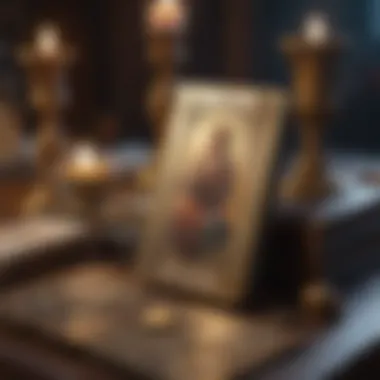

- Daily Draw: Document a single card drawn each day. Write about the impressions and feelings the card evokes, relating it to your daily life.
- Reflective Entries: After readings, take time to reflect on them in your journal. Were there any surprising insights? How did you feel during the reading? This reflection can often reveal patterns over time.
- Symbol Interactions: Note any symbols that frequently appear in your readings. Keeping track of recurring themes can deepen your understanding of personal and collective energies that resonate with your interpretations.
Ultimately, the act of journaling creates a dialogue between the reader and the tarot. It fosters a personal connection that not only enhances intuitional skills but also promotes self-discovery and awareness. Creating and maintaining this practice can open doors to deeper insights that could inform both personal journeys and readings for others.
"The cards are merely the instruments; intuition is the maestro that interprets the music of the universe."
By nurturing both intuition and connection through consistent practice and reflection, readers can enrich their understanding of tarot, creating an empowering experience for themselves and the seekers they engage with.
Ethical Considerations in Tarot Reading
In the realm of tarot reading, the ethical dimensions play a crucial role. As practitioners use tarot as a means of guidance, understanding and adhering to ethical standards are vital for ensuring trust and respect. This topic becomes even more pronounced when readings are offered for free. Many might find themselves eager to gain insights without the barrier of costs, yet the matter of ethics in this practice must remain center stage. It’s not just about the cards but rather the responsibility held by the reader in interpreting and relaying information to querents.
Consent and Boundaries
Consent forms the foundation for any kind of reading, free or compensated. It is paramount that a reader fully informs potential clients regarding what the session entails. A clear line must be drawn between what is considered an acceptable inquiry and what crosses into intrusive territory. For instance, asking for insights about a person’s health without their knowledge can be seen as unethical. Establishing boundaries before a reading can effectively set the stage for a respectful interaction.
- Importance of Clear Communication: Readers should clearly communicate the purpose of the session. A brief outline of each card's implications and the nature of the reading can help the querent feel more at ease.
- Respecting Personal Space: In addition to verbal consent, recognizing emotional and psychological boundaries is equally crucial. Not everyone is comfortable delving into their thoughts, and pushing for deeper insights can potentially harm.
It's essential to ensure that both parties are comfortable engaging in the reading process, creating a safe and supportive atmosphere.
Handling Sensitive Topics
When it comes to sensitive topics, a delicate touch is required. Tarot has the potential to facilitate discussions around deeply personal issues such as relationships, grief, or career uncertainties. However, delivering these messages with caution is non-negotiable. Readers should be aware of the implications of their words and execute their readings with utmost care.
"Effective tarot reading requires not just skill, but sensitivity. You must tread lightly when the cards reveal truths that could be difficult for the querent to face."
Here are some steps to handle sensitive topics gracefully:
- Know Your Audience: Before diving into potentially distressing subjects, gauge the querent's readiness. It's worth asking if they are comfortable discussing heavy themes.
- Use Compassionate Language: The way messages are framed can make a significant difference. Instead of bluntly stating a negative outcome, it might be beneficial to convey the message gently and offer supportive guidance.
- Follow Up: After covering a tough subject, offering a moment for the querent to process the information can be an effective practice. A simple question like "How do you feel about what we've discussed?" may help the querent reflect and digest their emotions.
In summary, ethical considerations in tarot readings extend beyond the card interpretations themselves. Practitioners are tasked not only with channeling the wisdom of the cards but also with managing the implications of their guidance. By prioritizing consent, respecting boundaries, and approaching sensitive subjects with care, a reader can ensure that their insights serve as tools for empowerment rather than sources of discomfort.
Resources for Free Future Tarot Readings
Finding quality resources for free future tarot readings is crucial in today’s digital age. Although most believe that profound insights come at a price, there are ample platforms that provide valuable information and readings without the hefty fee. These resources open doors for novice users and seasoned practitioners alike who seek knowledge without financial constraints.
Free resources offer an opportunity for exploration. They allow individuals to familiarize themselves with tarot's rich narratives, enhancing their understanding incrementally. Moreover, accessing these platforms can eliminate the intimidation often associated with learning tarot, as they provide a welcoming environment for inquiry. When someone wants to dive into tarot reading without heavy investment, it's essential to know where to look and what to expect from those platforms.
Online Platforms Offering Free Readings
Numerous online platforms have emerged as gold mines for free tarot readings. These websites often cater to newcomers, offering simple, intuitive layouts that guide users through their readings. Here are some noteworthy mentions:
- AstroSeek: Offers a free tarot reading section alongside a host of astrological content. Users can explore different spreads, with insightful interpretations provided.
- Tarot.com: While they provide premium content, there are still numerous free options, ranging from daily card draws to mini-readings that can equip users with basic understanding.
- Labyrinthos: An educational resource, Labyrinthos goes beyond readings and dives into expansive tarot learning. They offer a virtual tarot deck to facilitate practice in a user-friendly format.
These platforms often contain forums and community sections, allowing users to share interpretations and experiences. Engaging with others can foster a sense of connection within the tarot community, where individuals can cultivate understanding while learning from each other’s insights.
Apps and Tools for Tarot Enthusiasts
In the palm of your hand, smartphones can be a gateway to tarot exploration. Various apps provide guidance, card meanings, and even the ability to do readings on demand. Consider these valuable applications:
- Golden Thread Tarot: A user-friendly app that features tarot readings, card meanings, and educational resources tailored to individual learning styles.
- Mystic Mondays: This app blends modern design with traditional tarot readings, offering daily draws and intuitive insights.
- Tarot by Tiny Tarot: A straightforward app focused on classic tarot interpretations, making it easy to access and engage with card meanings.
Utilizing these apps can enhance one's ability to practice tarot anywhere, anytime. They also offer interactive experiences that can help solidify understanding, transforming abstract concepts into more tangible interpretations.
As someone delving into tarot, pursuing free resources not only saves money but also invites a sense of adventure and discovery in a world rich with symbolism and personal insight. In nurturing this journey, individuals can expect to grow in their tarot practice organically and authentically.
Epilogue
In wrapping up the exploration of free future tarot card reading, it’s essential to recognize the various dimensions it presents, particularly through the lens of self-reflection. Tarot does not merely act as a tool for predicting the future; rather, it invites a deeper understanding of oneself. When we engage in tarot readings, we tap into a wellspring of insights that encourage introspection and facilitate personal growth.
The significance of self-reflection in the context of tarot can be distilled into several key components:
- Personal Insight: As cards reveal their meanings, they often illuminate aspects of our lives that we may overlook or shy away from. The process of interpreting these revelations provides a chance to confront emotions and thoughts that need addressing.
- Empowerment: Free tarot readings, particularly those focused on future outcomes, empower individuals. They allow one to see possible paths ahead, fostering a sense of control and foresight in decision-making processes.
- Creativity in Interpretation: Engaging with tarot encourages creative thinking. Readers learn to connect symbols in innovative ways, which enhances not only their understanding of the cards themselves but helps hone problem-solving skills in daily life.
- Community and Sharing: The shared experience of tarot reading within communities—whether through online platforms or intimate gatherings—fosters bonds among individuals. These connections can lead to shared wisdom and a collective exploration of personal narratives.
- Spiritual Connection: The ritual of reading tarot can also serve as a spiritual practice. It encourages mindfulness and presence, as individuals often find solace in the act of reaching out to something beyond themselves, seeking guidance through intuition and symbolism.
The practice of reflection through tarot is ultimately a mirror held up to one’s inner landscape. As you consider your experiences with tarot, you may find that each reading carries a unique message tailored to your current circumstance. This personalized exploration is invaluable, illuminating paths you might not have previously considered.
